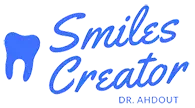Dental anxiety and fear are common problems for many people. Often, these fears are so intense that they prevent patients from getting the necessary care and treatment for their teeth and gums. This can have serious consequences, like delaying treatments that can lead to more tooth decay and gum disease. Thankfully, there are safe ways to reduce or alleviate dental fears, including sedation dentistry. Sedation can help patients feel comfortable during their procedures and may also help them get through invasive or complex treatments, such as cosmetic dental implants. However, some people are still hesitant to try sedation dentistry because they have heard misconceptions or misinformation about how it works and its safety. This blog post from Southington Dentistry debunks 6 of the most common myths about sedation.
Myth #1: Sedation Dentistry is Not Safe
The sedatives used for dental sedation are FDA-approved and safe when administered by an experienced dentist. They are designed to have minimal risks for most patients, but the precise risk level varies from one patient to another. For instance, some people have allergies to certain sedatives, so if you have any medical conditions or take medications that could interfere with the effectiveness of your sedative, talk to your dentist about them.
Myth #2: Using Sedation Dentistry Causes Complications
Most people don’t experience any complications from sedation dentistry, but as with any medication or procedure, there is always the potential for some mild side effects to occur. Your dentist will go over your medical history to make sure that you are a good candidate for sedation and they will be able to tell you what to expect in terms of side effects for the specific type of sedation that you will receive.
Myth #3: Only Some Patients Can Benefit From Sedation Dentistry
There are many benefits of sedation dentistry for patients of all ages, from the youngest to the oldest. Sedation can be used to treat many different issues, from dental phobias to strong gag reflexes. It can even be used for invasive procedures, such as root canal therapy and dental implants, as long as the proper dose is used.
Some sedatives can cause you to fall asleep during your appointment, but most patients are awake enough to communicate with their dentist and respond to questions and directions. The most pronounced effect is that of oral conscious sedation, which uses a pill-form sedative, typically triazolam (Halcion), in the diazepam family. This can make you groggy, but you will be able to wake up with a gentle nudge.
Other sedatives, such as nitrous oxide, commonly known as laughing gas, can make you feel relaxed but alert throughout your appointment. However, it is important to note that nitrous oxide will wear off fairly quickly, and your dentist may recommend that you arrange for transportation home after your visit.
The Benefits of Sedation Dentistry – Overcoming Dental Anxiety and Fear
The Role of Sedation Dentistry in Complex Dental Procedures
